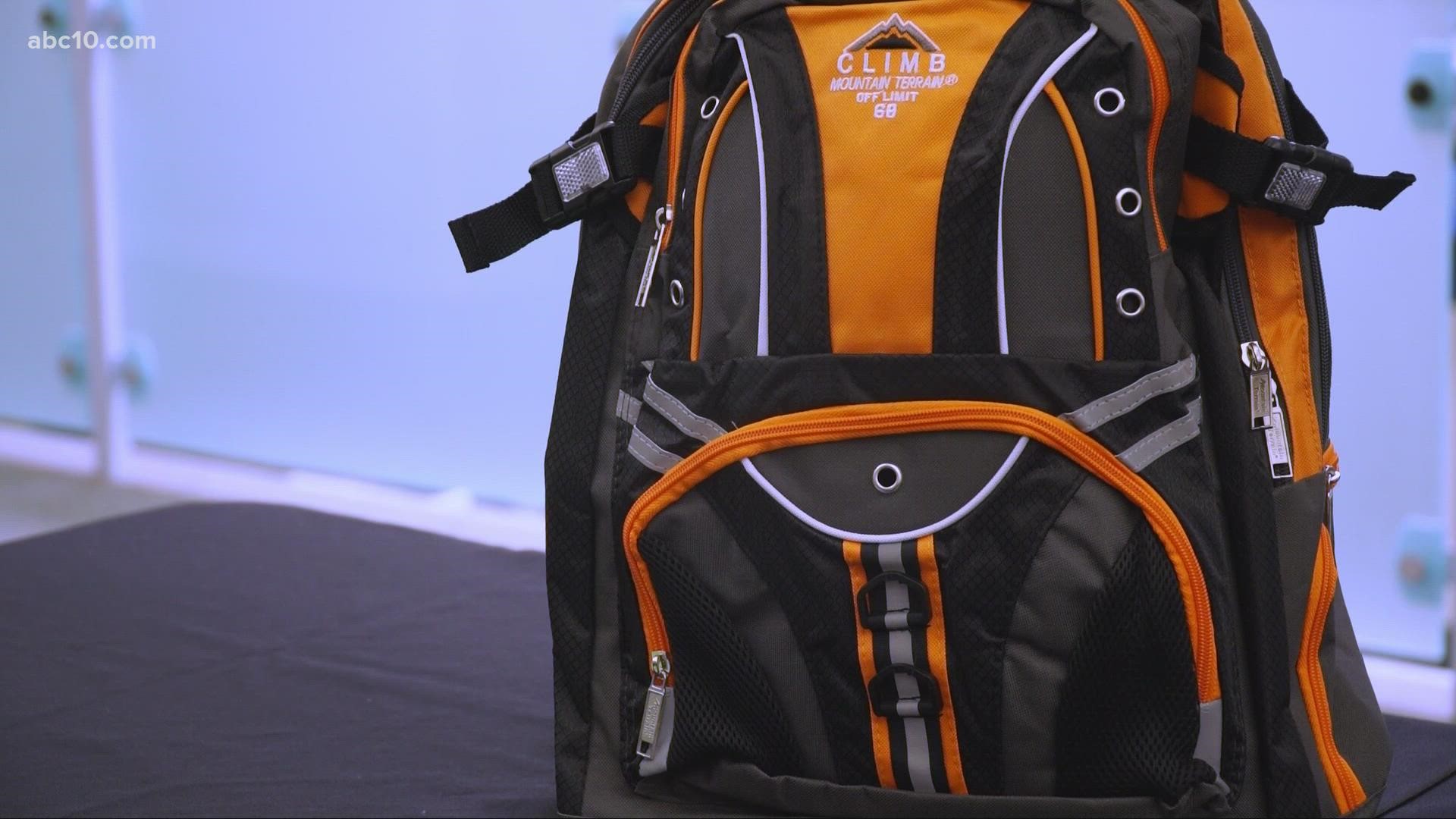SACRAMENTO COUNTY, Calif. — For the first time, the Twin Rivers Unified School District [TRUSD] is offering free back-to-school supplies for all Pre-K through 12th grade students. That's nearly 27,000 children at 45 school sites.
The move comes as families continue to struggle with financial impacts of the COVID-19 pandemic.
“I don’t think it's been easy for anyone in our community,” Dr. Lori Grace, Associate Superintendent for Twin Rivers Unified School District, said. “We're making sure every student receives a backpack stuffed with school supplies on the first day of school.”
The economic fallout from COVID-19 continues to hit some segments of the U.S. population harder than others, according to the Pew Research Center. Researchers surveyed 10,334 adults nationwide in January 2021. They found lower-income adults, as well as Hispanic and Asian Americans and adults younger than 30, are among the most likely to say they or someone in their household has lost a job or taken a pay cut since the COVID-19 outbreak began in February 2020. Among those who've had these experiences, lower-income and Black adults are particularly likely to say they have taken on debt or put off paying their bills to cover lost wages or salary.
"We're a very diverse school district,” Grace said. “Over 50% of our students are Hispanic or Latino. We don't want any student to start out at a disadvantage by not having everything they need to start the school year.”
This year, back-to-school supplies will cost families more than ever. That’s according to a National Retail Federation survey conducted in July 2021 with 7,704 consumers across the U.S. Families with children in elementary through high school plan to spend, 849-dollars, on average, on school items this academic year. The national back-to-school spending total is expected to reach a record 37 billion this year compared to 33 billion last year.
"Consumers are spending more on items like electronics and clothing as they make plans for students to resume activities in person this fall," Phil Rist, Executive Vice President of Strategy, Prosper Insights & Analytics, said. "For those in particular with children in elementary to high school, shoppers are putting the largest portion of their budgets toward electronics, new clothes and accessories."
Parents are spending big on electronics as the top school item, totaling $12 billion. Most parents plan to buy a laptop, while others plan to get a calculator or tablet. But, for vulnerable students whose families can't afford basic school supplies, coming to class unprepared can create social and emotional challenges and put children at a disadvantage for learning. Twin Rivers Unified is working to take the burden off families and close the school-supply gap by providing electronics, along with other needs, for students.
"All students will receive some level of school supplies,” Grace said. “That includes folders, notebooks, colored pencils, pens, and other things students will utilize in their grade level. If they don't already have a Chromebook that we allowed them to keep over the summer, they will get a Chromebook if they are enrolling new into our district.”
Children remain the poorest age group in America, with children of color and young children suffering the highest poverty rates. That’s according to the Children's Defense Fund. A recent report by the organization shows about 10 million children in the U.S. were poor in 2019 and nearly 71% of them were children of color. More than 1 in 4 Black children and more than 1 in 5 Hispanic and American Indian/Alaska Native children were poor compared with 1 in 12 white children.
"In 2019, 16% of California's children were living in poverty,” Emma Mehrabi, Director of Poverty Policy for the Children's Defense Fund, said. “That's more than 1.3 million children. Children of color were disproportionately represented, with 26% Black, 21% Hispanic, and 7% White children living in poverty. Decades of blatant discrimination and discriminatory policies and practices that have historical roots, but continue today, have really hurt families of color. As we look at the continual rise in racial inequalities in this country, we are going to keep seeing a growing impact on national economic well-being.”
At Twin Rivers Unified, more than two percent of students are homeless and 90% are classified as socio-disadvantaged. The school district received about $250 million in COVID-19 funding and the district is using the funds, in part, to provide the free back-to-school supplies for students, along with other needs, such as emotional and mental health support as families continue to cope during the pandemic.
“We really see ourselves as the center for our communities,” Grace said. “We love and support everything about the communities that we serve. It’s a great way to welcome our students back with open arms and let them know that we are here for you and we’re going to continue to equip you with everything you need to do your very best learning.”

